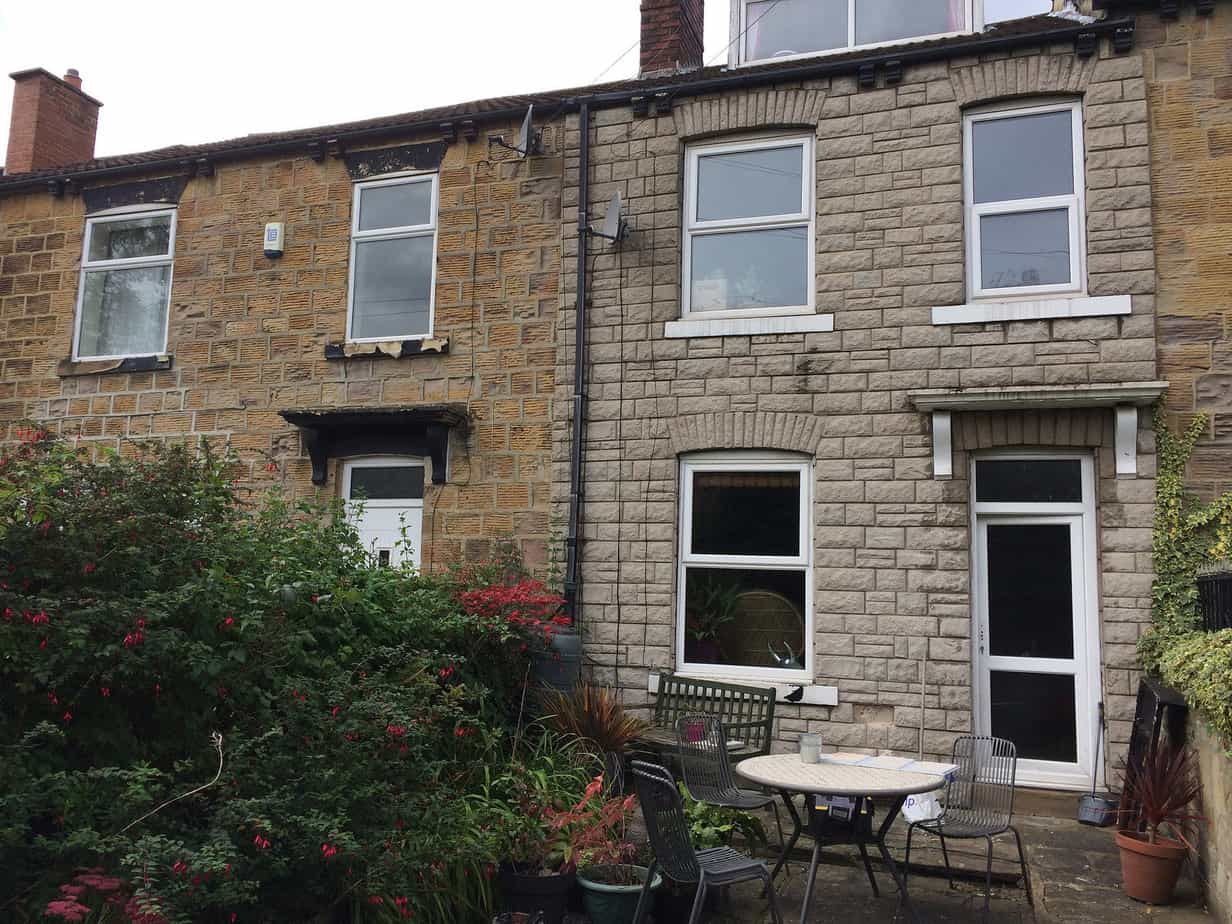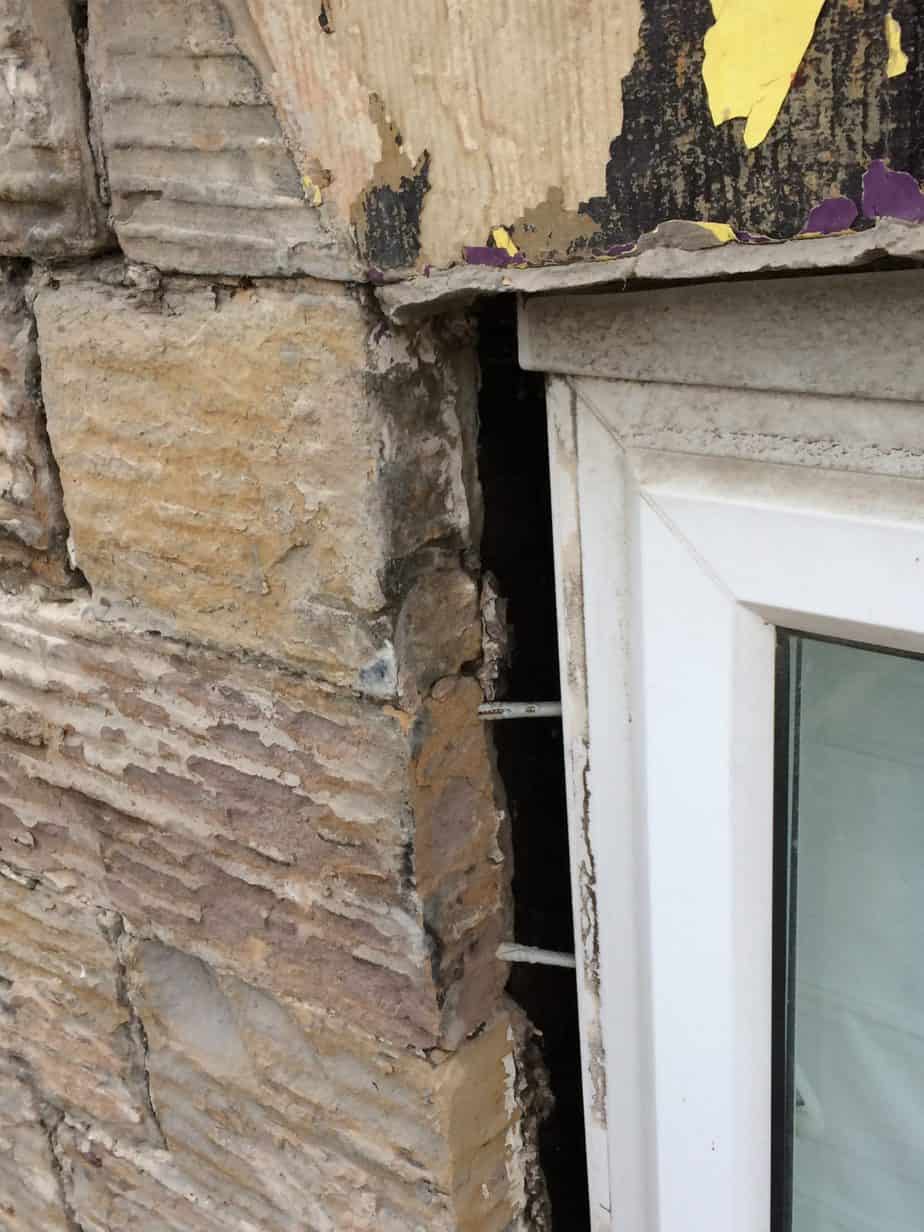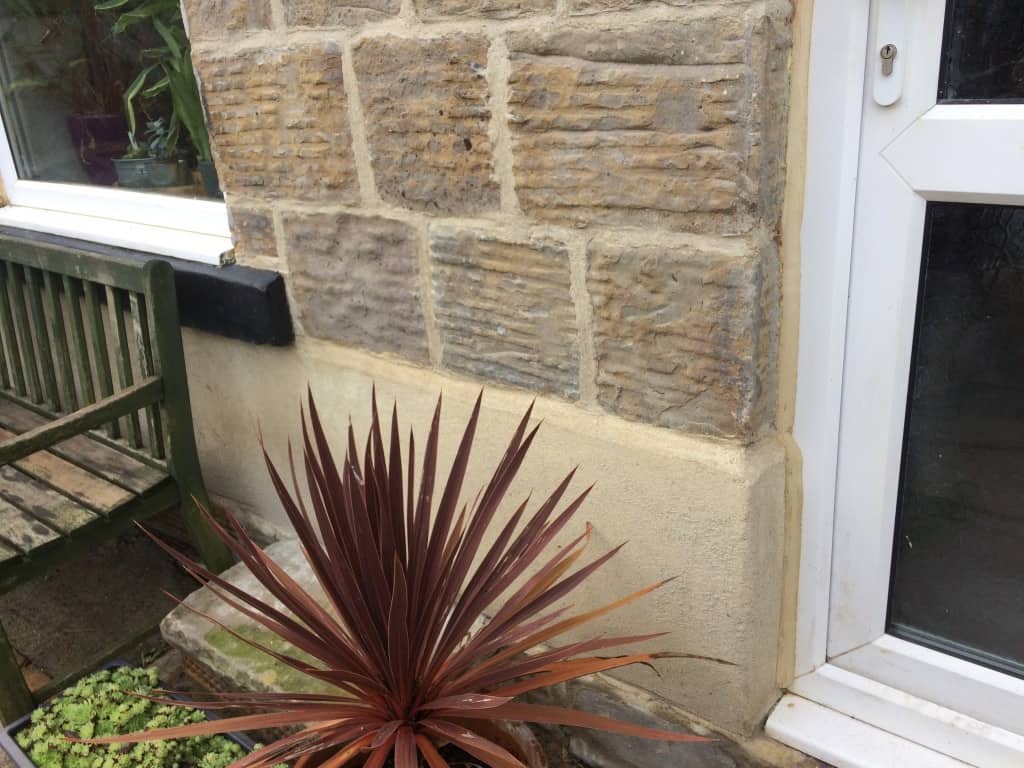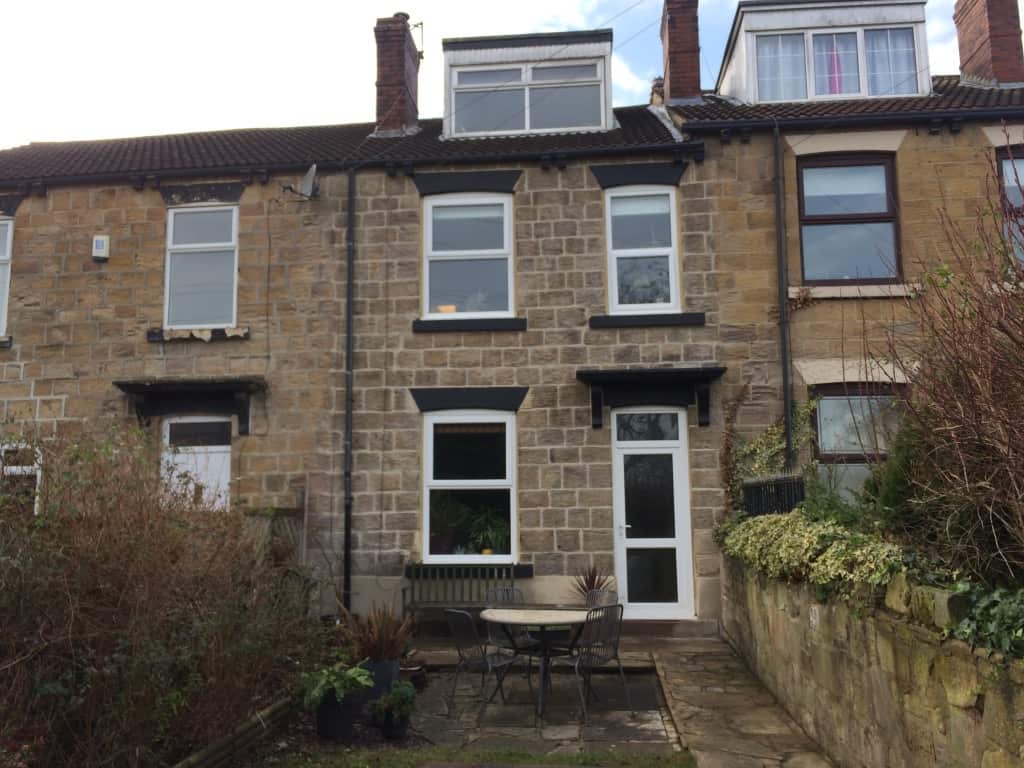Lime render and Lime pointing with stone cleaning to a solid wall stone house
What can be done with the walls once cladding has been taken off? Is it possible to clean stone-work or will the walls need a new finish? Using a range of historic lime finishes we can restore this neglected Victorian stone mid terrace
Stone cladding was removed from this late Victorian stone built house..Yes, you have read that right! cladding removed from a stone house
Back in the 1980’s this house originally built from local natural stone was cladded with concrete imitation stone. We managed to reclaim this lovely house back to its former glory, once again it can breathe and the damp issues have been rectified. We hope you agree with us that now it looks much better
Removing the cladding and restoring the stonework took some time, using lime for the pointing and lime repair mortar for the stonework we were able to restore this mid terrace house. Gaps around the windows had to be filled and rendered up with lime based stone mortar. The old mortar beds were raked out 20-25mm and brushed clean. Once we removed the cladding we had to clean off the stone cladding adhesive residue, which fortunately was a weak sand and cement mix, it did have some PVA glue in the mix but it didn’t adhere too much to the underlying stonework
Once the cladding was consigned to the skip, the wall was wet blasted, this process involves water jetting, a stream of dried kiln sand is sucked up into the water jet at high pressure, this compared to grit blasting is a much less destructive method of cleaning lightly solid stone. The stonework was then given an acid clean using Hydrofluoric (HF) 15% strength rinsed down with a hot wash. The stonework on the bottom section under the window cill had suffered from some extensive spalling, this is a common erosion problem with soft stonework. This is probably why they had stone cladding put on in the first place, as a way of trying to deal with the stone erosion problem.
Rather than removing the old worn stones and replacing with new, it was agreed that a band of lime render, using the same material as the pointing be applied. The lime render consisted of sharp sand & NHL 3.5. In the base coats, we used goat hair, which gives the lime render strength and reduces cracking.
This new lime render will allow the damper lower section of the walls to breathe, it will also be able to cope well with efflorescence (mineral salts).
Finally, the stonework was lime pointed in a mix of sharp sand and natural hydraulic lime (NHL) 3.5 bag rubbed and finished in a “flush to stone” profile, which unlike the ledges created in box pointing, or (AKA, block pointing, cut off) will not encourage water penetration, it also looks right on a period house.
Lime pointing is more flexible than cement pointing, it is also breathable, lime pointing will allow walls to breathe.
Lime based mortar is what this house was originally built with the internal walls plastered with a lime putty mix





